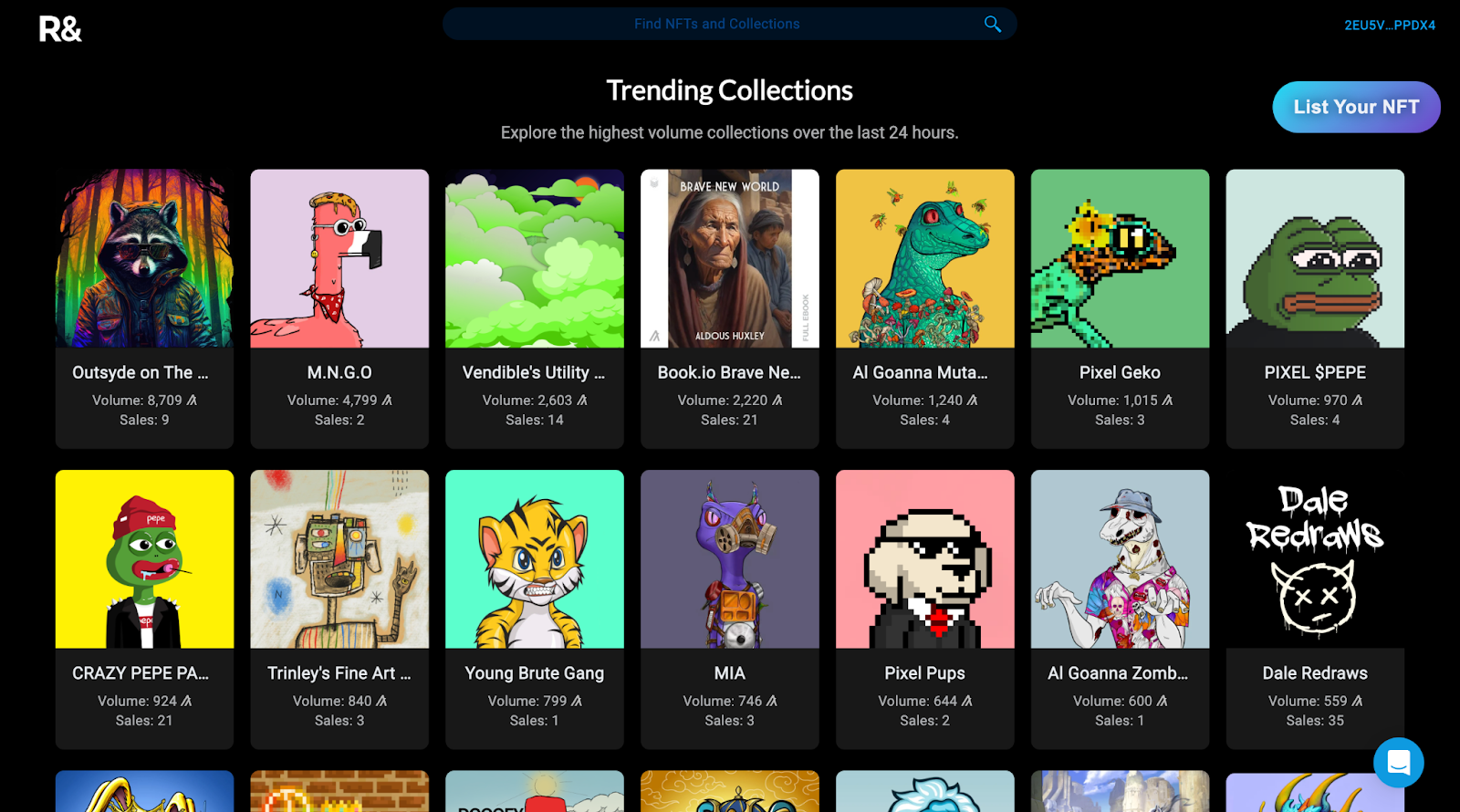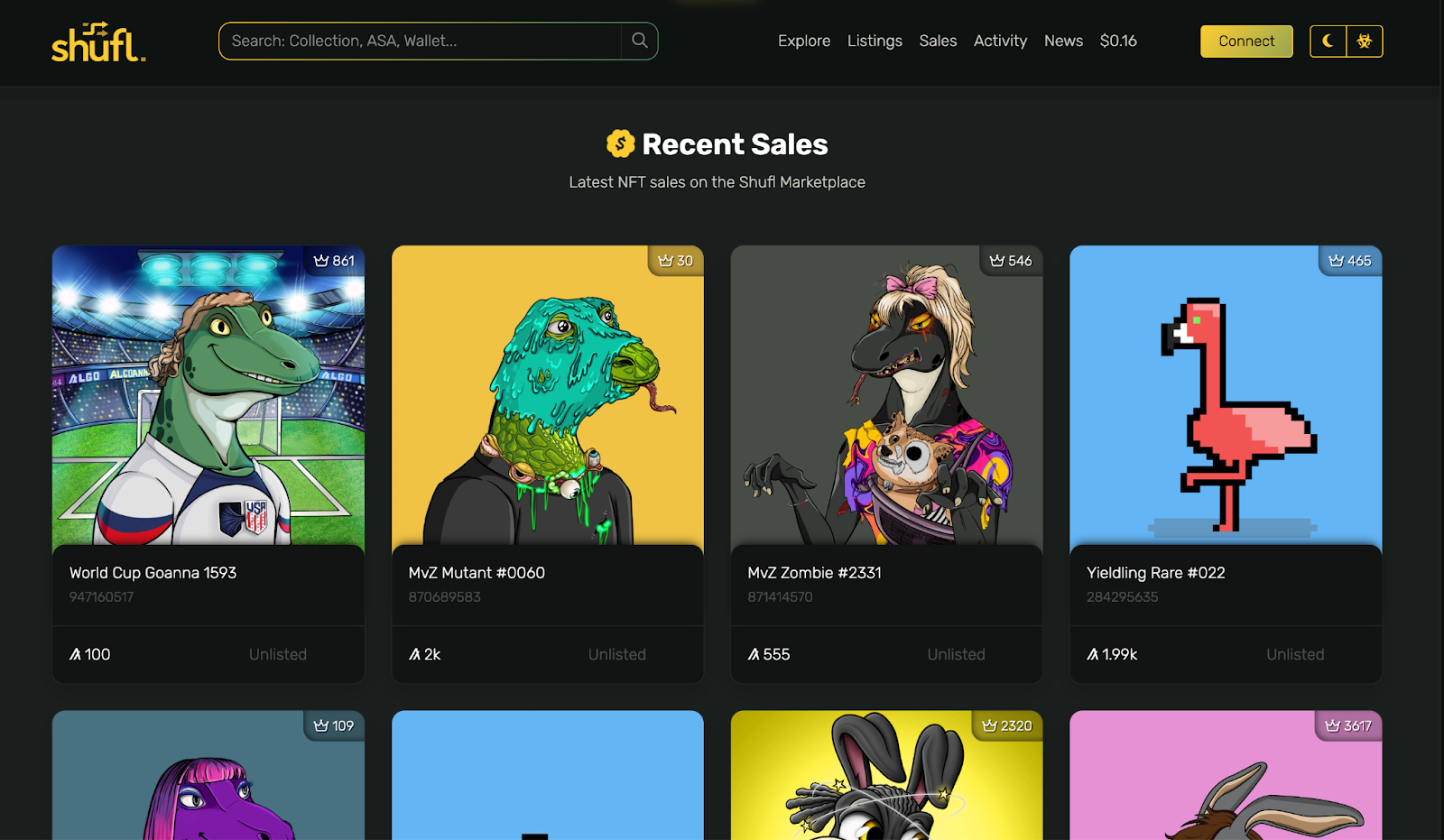Are you an artist, musician, or brand interested in how to make an NFT? This step-by-step guide will teach you everything you need to know about how to create an NFT (or non-fungible token).
- Understanding NFTs
- What are NFTs?
- Why are NFTs valuable?
- Use cases for NFTs
- Before you create digital artwork
- Preparing your digital artwork
- Choosing the right file format
- Ensuring originality and uniqueness
- Choosing a place for your NFTs
- Finding the right blockchain
- Selecting an NFT marketplace
- Evaluating the community and user base
- Creating an NFT
- Setting up a digital wallet
- Connecting your wallet to the marketplace
- Minting your NFT
Understanding NFTs
What are NFTs?
Non-fungible tokens, or NFTs, are unique digital assets that are stored on a blockchain. Each NFT contains metadata that identifies it as a one-of-a-kind item. This metadata can include information about the artist, the artwork, the history of ownership, links, and other details.
One of the most interesting things about NFTs is that they are non-fungible, which means that they are all unique, and not necessarily interchangeable. This is in contrast to fungible assets like cryptocurrency or traditional currency, which can be exchanged for other assets of the same value (i.e $1 = $1).
Another important aspect of NFTs is that they are stored on a blockchain such as Algorand. A blockchain is a decentralized digital ledger that records transactions in a secure and transparent way. This means that each NFT is verified and authenticated on the blockchain, making it impossible to counterfeit or duplicate.
Why are NFTs valuable?
The value of NFTs stems from several factors, which can be attributed to their unique characteristics and the underlying technology that powers them. Here are some reasons why NFTs are considered valuable:
- Verifiable ownership: NFTs can prove the authenticity and ownership of a digital asset. This concept of provenance and scarcity is fundamental to the value of NFTs.
- Digital scarcity: With NFTs, artists can sell their digital art as unique, one-of-a-kind items. This scarcity can add value.
- Ownership rights: When someone purchases an NFT, they acquire ownership rights to that specific digital asset.
- Unlocking access: NFTs can provide unique experiences or access to exclusive content, events, or communities.
Use cases for NFTs
NFT technology allows for artists to monetize and sell their digital artwork, and for collectors to truly own the artwork, provable and traceable through information recorded on a blockchain. Transactions can be made directly between artists and collectors without the need for an intermediary such as a gallery or auction house. Blockchain can also enable royalty payments on future sales for artists.
NFTs have a wide range of use cases beyond the art world. For example, they can be used to represent real-world assets such as real estate or to tokenize airline tickets. They can also be used for music, where artists can sell unique albums, songs, and even copyrights as NFTs.
The possibilities for NFTs are endless, making them an exciting and fast-growing market. As more people become interested in NFTs, we can expect to see even more innovative use cases for these unique digital assets. It is only a matter of education and adoption for everyone to be using NFTs on a daily basis without noticing that they are interacting with the blockchain.
Before you create your NFT
Preparing your digital artwork
Many popular NFT collections feature digital artwork. However, if you’re a traditional artist, it’s also possible to digitize your work in order to add it to the blockchain. Before you learn how to create an NFT, you need to do some preparation.
Choosing the right file format
When preparing your digital artwork, it's essential to choose the right file format. The most common file formats for NFTs include PNG, GIF, and MP4. PNG is an excellent choice for still images, while GIF is ideal for animated artwork. MP4 is best for videos.
It's important to keep in mind that each marketplace may have specific requirements, so be sure to check beforehand. Some marketplaces may only accept specific file formats or have size limitations, so it's essential to do your own research before submitting your artwork.
Ensuring originality and uniqueness
One of the most fundamental features of NFTs is their uniqueness. Therefore, it's crucial to ensure that your artwork is original and not plagiarized. Plagiarism can decrease the value of your NFT and lead to legal issues. To ensure that your artwork is original, it’s best to create it from scratch, using your own designs and ideas.

Additionally, you can use plagiarism checker tools like reverse image search on Google and Pinterest to ensure that your artwork is unique. These tools compare your artwork to other artwork available online and highlight any similarities.
Choosing a place for your NFTs
Finding the right blockchain
Choosing the right blockchain when creating an NFT is a critical decision that will influence your NFT's features, user base, and fees. Each blockchain has its unique advantages and disadvantages. Consider factors such as transaction fees, ease of use, community support, and the potential for future growth.
For instance, some blockchains may have a larger user base and a more established ecosystem with more resources, but higher fees associated with minting and trading NFTs. Blockchains, like Algorand, can offer lower fees and faster transaction times, making NFTs more accessible to creators and collectors.
Selecting an NFT marketplace
You can first select the blockchain or the NFT marketplace. Some marketplaces allow you to select between chains while others are exclusive to one blockchain. As with blockchains, each marketplace has its own unique features, user base, royalties, and fees. Some marketplaces may have lower fees but fewer features, while others may offer more advanced functionality at a higher cost. Depending on your needs, you may want to prioritize one over the other.

For example, if you're just starting out as an NFT creator, you may want to look for a marketplace with low fees and a user-friendly interface. On the other hand, if you're an established creator with a large following, you may be willing to pay higher fees for access to a more curated and exclusive marketplace. Some marketplaces optimize for primary sales, while others promote secondary sales. You will also notice some NFT marketplaces focus on PFP (profile picture) projects, while others target fine art sales, for instance.
Evaluating the community and user base
The community and user base of an NFT marketplace can also have a big impact on your success as a creator. Look for marketplaces with engaged communities, as these are more likely to attract potential collectors for your NFTs.
You can evaluate the community of a marketplace by looking at its social media presence and forum activity. You can also assess what types of NFTs are popular on the marketplace to get a sense of what buyers are looking for.
Ultimately, the best NFT marketplace for you will depend on your individual needs and goals as a creator. By considering factors like fees, features, and community, you can make an informed decision and get started making your own NFTs.
How to create an NFT
Are you ready to create your own unique NFT? Let’s begin.
Setting up a digital wallet
Before creating an NFT, you must have a digital wallet. This wallet will store your cryptocurrencies and allow you to transact on the blockchain.
When choosing a digital wallet, it's important to consider factors such as security, ease of use, and compatibility with the NFT marketplace you plan to use. You'll also need to ensure that your wallet is funded with the necessary cryptocurrency to cover transaction fees and the cost of minting your NFT.
Connecting your wallet to the marketplace
Once you have a digital wallet, you can connect it to the NFT marketplace that supports NFT minting. This will allow you to buy, sell, and interact with the marketplace and its users. A couple of options are Rand Gallery, Algogems, and NFT Factory.
Minting your NFT
Finally, you can mint your NFT by uploading your digital artwork to the marketplace and creating a unique identifier on the blockchain. This process verifies the authenticity and ownership of your NFT.
When minting your NFT, you'll need to provide detailed information about your artwork, such as its title, description, and file format. You'll also need to set a price for your NFT and decide whether to sell it as an auction or fixed-price listing.
That’s it! You’ve created an NFT.
Learn more about NFTs on Algorand.
Related articles